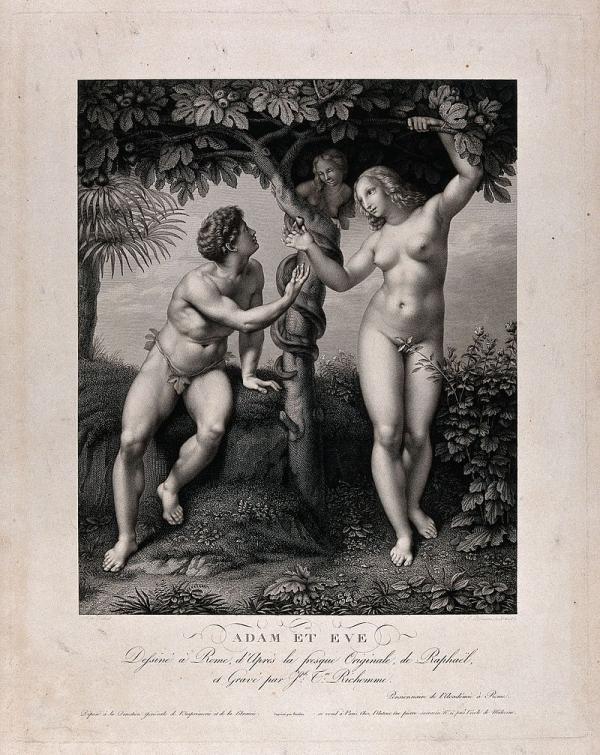A definitive ranking of the top seven ridiculously “evil” instances in Saint John County
In loyalist Saint John County, the condemnation of crime and “evil” played a big role in the maintenance of a proper and stable community. As explained in a previous blog post, Saint John County placed high value on having a powerful justice system. During the American Revolution, Britain’s loyalists lived in a state of constant insecurity; they were victims of mob attacks, and they were often driven from their homes. Because of this, the residents of Saint John County felt a tremendous need to crack down on crime in order to establish a clear order, and to prevent further chaos.
If you were to explore the Saint John County Court Records, you would not only discover that many crimes were addressed in the Courts of loyalist Saint John County, but also that Court Officials, such as members of the Grand Jury, referred to a number of these crimes as “evil.” Given that these Court Records come from the early nineteenth century, it is very likely that the word “evil” had biblical connotations for the people of Saint John. It is arguable that the people of Saint John County believed in the idea Original Sin which came from the story of Adam and Eve, and that it was the duty of the Saint John County justice system to eradicate such evil behaviors from their own community. Any “evil” doings were ungodly, and, as a result, went against the order that loyalist Saint John County wished to maintain.

(Photo courtesy of Wikimedia Commons: licensed under Wellcome Images)
Naturally, the Courts would have dealt with many obvious instances of “evil”—such as larceny, assault, and bastardy. However, sometimes even the more obscure crimes (which are more entertaining to contemporary eyes) were stamped with the “evil” label by Saint John County. So, as promised, here is a definitive list of the top seven ridiculous “evil” (and amusing) situations that take place in the Saint John County Court Records (so far!):
7. A Block House in Carleton County containing at least 600 casks of gun powder: 9 June 1826
In this case, the Grand Jury presented that this Block House was holding over 600 barrels of different gun powders, and they said that it was “dangerous” to the community and an “evil” toward private property. I would imagine that this would be pretty hazardous, so no further explanation needed.
6. “Evil” people erecting buildings, platforms, and fences on the streets and highways of the County: 23 March 1827
This actually happened quite often in Saint John County. So much so, that people were not able to navigate their carts in the street, and people walking by foot were sometimes injured in attempting to get around these encroachments. Clear the road, folks.
5. Idle prisoners: 7 June 1834
After visiting the Jail, the Grand Jury was shocked that the prisoners were laying around in “utter idleness.” Clearly the Jury did not think that the prisoners were being effectively punished for their crimes. The Jury members were so mad about this one that they called it a “crying evil.”

“The Grand Jury cannot but express their surprize at finding all the Prisoners in the Jail in utter idleness and would strongly recommend that some steps be taken to remedy this crying evil.”
4. Archibald McGechie’s disorderly house “full of evil disposed persons and drinking, tippling, cursing, swearing, quarrelling and unlawful misbehavior”: 5 September 1832
How improper. Apparently, he also kept a disorderly room for public dancing, music, and people of “dishonest conversation.” Needless to say, he was fined.
3. “Evil” billiards tables in the city: 8 September 1832
If people were playing billiards, then they were definitely committing the evil of gambling. Whether it be by racing horses in the street, by bowling in a homemade ten-pin alley, or even by playing tennis, the people of Saint John County always found a way to have fun and to squander some illegal cash.
2. George Donald: 8 December 1832
You know the Grand Jurors are angry when they actually refer to a specific person as evil. For some reason (which is never explicitly stated), George Donald was a pretty deeply hated guy. On multiple occasions, the Grand Jury asked that he be removed from the Common Jail because he was “unfit” for the environment and just an all-around “evil” guy. Also, he was apparently taking up one of the “best rooms” in the jail. Not cool, George.
1. The “evil” practice of allowing cows to go at large in the city: 5 December 1835
This one speaks for itself. Loose animals (such as cows, pigs, sheep, and dogs) are evil; they wreak havoc on yards, they leave filth in the street, and they even tear up the graveyards. Just don’t let your animals run wild, please.

“The Jury think the practice of allowing cows to go at large in the City to be a very great nuisance and recommend that some measures be adopted to remedy so great an evil.”
Note: All writing samples featured in this post are drawn from The Loyalist Collection.
Bethany Langmaid is a student assistant for the Microforms Unit at the Harriet Irving Library. She is currently in her fourth year of her Bachelor of Arts degree at UNBF in the English Honours Programme.
SUBJECTS: Saint John, New Brunswick, loyalist, law, crime, law enforcement




Add new comment